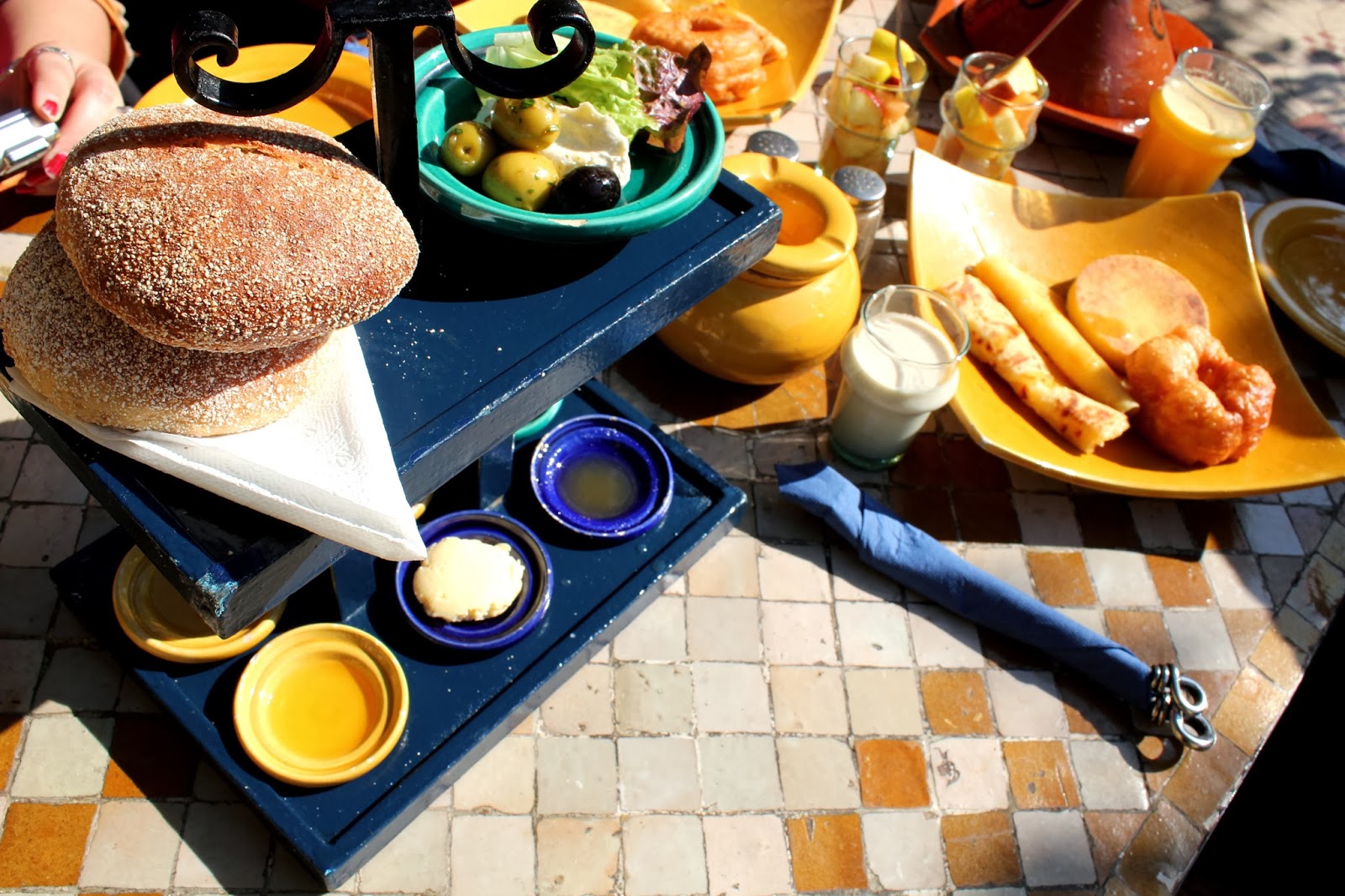Yesterday morning three friends from work and I went to La Sqala-- a chic traditional Moroccan restaurant close to the coast of Casablanca. As one of my colleagues is leaving Morocco this week, and we thought a Sunday girls' brunch was called for before she goes.
The restaurant is located in what was a once small Portuguese fort on the ocean, but now Casa's giant port stretches far out in front and you can barely see the water from the vantage point of the antique cannons that still guard the entrance. The open-air restaurant specializes in Moroccan cuisine and takes up the back of the fort. It's very popular among tourists and Moroccans alike. Because of my curiosity Othman and I had gone in to see it before, but we've never had reason to eat there since we eat homemade Moroccan food with his family on a regular basis.
While I was brave enough to bring my camera (I usually don't go out with it unless I'm with Othman) my nerves got the best of me next to the busy street in front, so I didn't get a picture of the cannons and front façade. But the inside is well documented!
Apparently 11:30am on a Sunday is the time to be there, so we sat and chatted a bit, and I took some photos of the front and back entrances as we waited for a table. Here is the back, which leads out to the old medina, one of the oldest parts of the city with tiny winding cobblestone roads and tiny shops and market stalls to match.
Lining the walkway from the front entrance are these tagines, aka traditional Moroccan crockpots. Any dish cooked inside of it is also called a tagine, and there is an endless variety. From eggs with ground beef and tomatoes to potato-carrot-zucchini with lamb to artichoke hearts with peas, there is a tagine to satisfy any taste. They cook over small fires for a long time before being served piping hot in the bottom of the dish. You eat with your fingers, scooping up the food with bread, because it's both the traditional way and the easiest way.
A more removed view of the inside front entrance. Above the doorway are some Arabic inscriptions, but don't ask me what they say!
I've always loved Moroccan ashtrays, because they don't emit that cold-ash smell like open ones do. Considering there are no laws against smoking in public here, these ashtrays make smokers in restaurants and cafes a bit less annoying.
One of the bigger and emptier dining areas, with traditional Moroccan deco.
And the other side of the room. The entrance to the right of this picture is big and open, but this was the most sheltered part of the restaurant, probably used more during dinner time.
More tagines.
Our table. Moroccans love tiles, which cover floors, walls and tables alike.
The view from our table-- the path leading from the open-air kitchen to the seating areas all around.
Time to eat!
The other ladies split a traditional Moroccan breakfast meant for 2, and couldn't finish it among the 3 of them. Since sugar and wheat were the standard I got some eggs on the side (which took forever to come because they were cooking in a tagine!) and eyed their food with jealousy. Moroccans really know how to make breakfast pastries, let me tell you.
Even though I don't eat it anymore (and never was really supposed to... oops), I agree with most everyone that has ever been here that Moroccan bread is incredibly good. It comes in small circular loaves (though generally lager than these) and is soft inside with a sightly harder crust. It's very different from any bread in the US and doesn't really resemble French bread either. It is simple but delicious, and Moroccans eat a huge amount of it. Also, the Moroccan government heavily subsidizes basic food ingredients (wheat, sugar, milk etc) so each loaf of bread costs only between 1 and 2 dirhams-- 15-25 US cents!
On our way out...
 |
A lovely morning with good friends! Seeing as it's January we were all bundled up, but yesterday was an absolutely beautiful day, and sitting in the sun in a courtyard sheltered from the wind we quickly shed our outer layers and enjoyed the sunshine. As is often said about Morocco, this is a cold country with a hot sun. When in the shade or as soon as the sun sets it gets quite cold in the winter, but when in direct sun, even in January, you can heat up pretty quickly. I'll take it.















beautiful! I actually had brunch this Sunday at Cheesecake factory in a preppy part of town and I have to say I am green with jealousy about your experience ;) One of the things I really miss about southern France is beautiful restaurants and being able to eat outside even in the 'winter'...
ReplyDeleteI love the colors in this post too!
Being able to eat outside in the winter is really lovely, yep. In the picture of the path you can see on of the tall metal outside heaters that I became well acquainted with in France. We definitely didn't need them that morning!
Delete